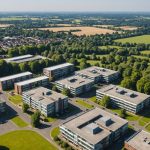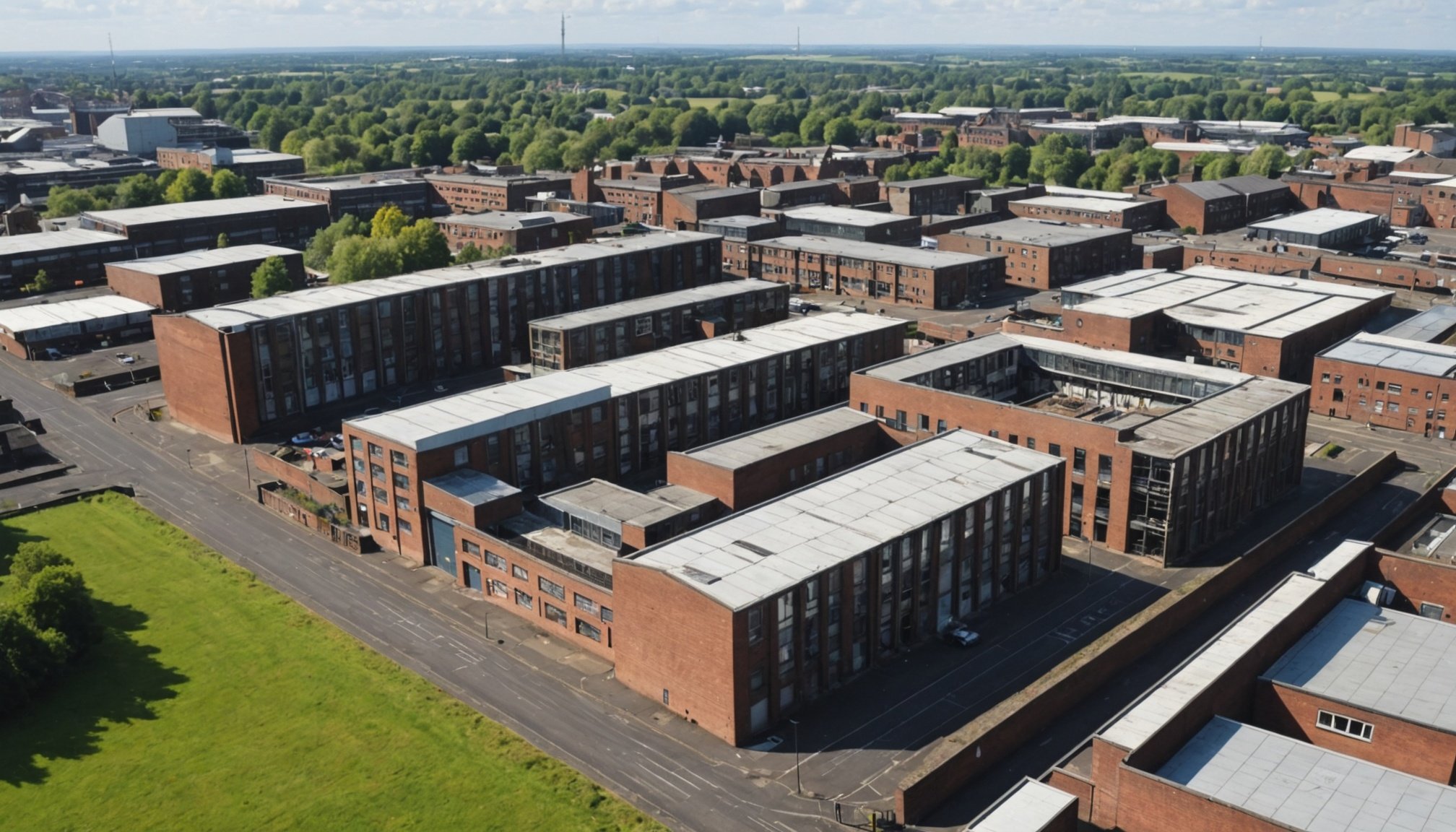Understanding Brownfield Redevelopment
Brownfield redevelopment is critical to revitalising areas in the Midlands as it transforms previously unused and potentially contaminated sites into productive properties. This process reconnects urban and rural areas by repurposing space and can boost economic growth. However, challenges such as site contamination, regulatory hurdles, and financial burdens can complicate these efforts.
The Midlands offers several success stories demonstrating overcoming these challenges. For instance, funding opportunities have been utilised to support projects that bolster environmental health and stimulate local economies. These initiatives create employment, reduce urban sprawl, and improve environmental quality, fostering a more sustainable future for communities.
Additional reading : Navigating the impact of the uk”s new cladding regulations on high-rise apartment sales
Environmental assessments become crucial as they identify contamination levels and guide redevelopment strategies to ensure community and environmental safety. These assessments mitigate risk and support regulatory compliance, a vital step in gaining public and stakeholder confidence.
Despite the complexities, brownfield redevelopment provides substantial long-term benefits, enhancing living standards and environmental integrity. Community involvement and strategic funding application significantly improve project success rates in the Midlands, transforming urban landscapes into vibrant spaces. Collaboration among various stakeholders, including local governments and private investors, remains pivotal in achieving these positive outcomes.
In the same genre : Revolutionizing real estate: strategies for london agents to leverage ai for enhanced property sales
Funding Opportunities for Brownfield Projects
Securing adequate funding is a pivotal step in the successful execution of brownfield redevelopment projects. Numerous funding sources are available, including both government grants and private investments, which finance various redevelopment phases. These opportunities aid in overcoming the financial challenges inherent in such projects and are pivotal for activating unused properties.
Government programs, such as the Midlands Regeneration Fund, offer significant financial support for projects aiming to manage contaminated sites. Investment strategies need to be tailored to enhance appeal to private investors, demonstrating both economic viability and community impact. Successful implementations often highlight mixed-use developments that blend residential, commercial, and open spaces.
When approaching grant applications, ensuring proposals are comprehensive and aligned with broader community and environmental goals is crucial. Highlighting potential economic benefits, job creation, and urban rejuvenation within applications will bolster appeal. It’s beneficial to draw from successful case studies, such as the transformation of derelict factory sites in the Midlands into vibrant tech hubs, as examples of effective funding utilisation. By strategically targeting both public and private financing, brownfield projects can transcend conventional limitations and achieve sustainable, long-term growth.
Navigating the Regulatory Landscape
Effectively managing the regulatory compliance aspects of brownfield redevelopment can dramatically influence project success. Key regulations impact development processes significantly, particularly concerning environmental safety. Environmental assessments play a crucial role by identifying contamination and guiding remediation. They ensure projects neither harm the environment nor the community, aligning with legal requirements.
Navigating through legal requirements is often challenging. Developing a thorough understanding of these can mitigate delays and financial losses. Common hurdles include soil contamination limits, water protection acts, and air quality standards, each crucial in maintaining community trust and safety.
Collaborating with specialists in environmental law and engineering assists in complying with regulations and fostering smoother approval processes. Solutions might include phased assessments and clearing legal barriers through upfront, detailed project proposals. Knowledge in these areas ensures timely addressing of potential bureaucratic impediments, setting the stage for project proposals that meet both regulatory and community expectations.
Identifying Potential Investors and Partners
In the realm of brownfield redevelopment, establishing strong investment networks is a crucial step towards success. Identifying potential investors entails understanding the specific interests of different stakeholders and aligning project goals with those interests. Strategies such as organising stakeholder meetings and engaging with local business communities can reveal potential partners interested in sustainable development.
Building robust stakeholder collaboration is essential, not only for attracting financial backing but also for garnering broader community support. Partnerships with local groups can enhance credibility and facilitate smoother project implementation. Highlighting projects that focus on community benefits, like local job creation, can pique interest and secure commitments from diverse investors.
Case studies illustrate how effective funding partnerships have transformed projects. For example, in the Midlands, collaborations between developers and community organisations led to the rejuvenation of previously derelict areas. These transformations showcased the potential of concerted citizen and business involvement.
For those embarking on redevelopment, considering similar strategic partnerships can make attracting investment more tangible. Building a network of willing investors requires showcasing both the economic viability and community enhancement potential inherent in these projects. Through collaboration, unlocking funding and achieving successful redevelopment becomes more achievable.
Resources and Tools for Brownfield Redevelopment
Accessing the right redevelopment resources is crucial for the planning and execution of brownfield projects. Several online databases provide invaluable tools for identifying suitable funding applications. These platforms help streamline the search for government grants and private investments, ensuring that project managers can secure essential financial support. Websites such as government environmental agencies and financial institutions often offer detailed guides and criteria for funding opportunities, simplifying the application process.
Managing a brownfield project requires robust project management tools to keep timelines on track and facilitate communication among team members. Tools like project management software enable teams to manage tasks, deadlines, and budgeting effectively. By implementing these technologies, teams can ensure that projects progress smoothly and remain aligned with regulations and community objectives.
Furthermore, engaging with organizations and networks dedicated to brownfield redevelopment can provide stakeholders with additional support. These groups often host workshops, training sessions, and collaboration opportunities that benefit all project phases. Building a network with other developers, government bodies, and community organisations can enhance project success and sustainability. By leveraging these resources, stakeholders can increase the likelihood of achieving redevelopment goals efficiently and effectively.
Practical Tips for Stakeholders
Managing a brownfield redevelopment project requires strategic planning and adept utilisation of resources. Effective project management is essential. Implementing comprehensive software solutions can streamline tasks, timelines, and budgeting, ensuring that projects remain on course. By integrating robust management tools, teams can enhance collaboration and maintain transparency, a key ingredient to sustained success.
Stakeholder engagement is a critical component. To effectively garner community support, it’s crucial to involve residents and local organisations in the planning processes. This can be achieved by conducting public forums and providing transparent updates. Engaging with the community not only builds trust but also enhances project credibility, making it easier to address public concerns.
When communicating with funding bodies, clarity and precision are paramount. Tailoring proposals to emphasise redevelopment strategies that align with environmental and economic benefits can increase acceptance rates. Highlighting potential job creation and environmental improvements will resonate well with financiers and regulatory entities.
- Project management: Utilise advanced tools.
- Community engagement: Foster transparent dialogues.
- Funding communication: Articulate benefits clearly.
By prioritising these practical tips, stakeholders can overcome challenges and propel brownfield projects towards successful outcomes.










